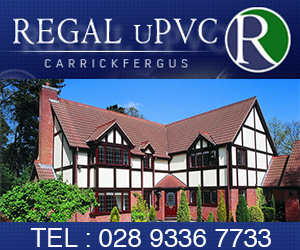03/08/2006
Government move to find 'Disappeared'
The British and Irish Governments have today set out a series of measures which have been agreed with the Independent Commission for the Location of Victims’ Remains (ICLVR).
In 2005, a forensic sciences investigative consultant was engaged by the ICLVR to conduct a review of the work carried out, and assess what further steps could be taken to recover the bodies of the so -called 'Disappeared’ - a number of people whom the IRA secretly killed and buried during ‘the Troubles.’
Throughout the course of the review, the forensic expert met with IRA interlocutors in the hope of identifying the burial sites of the victims who were not found when the Commission carried out its initial excavations in 1999 and 2003.
The Commission has briefed the families of the 'Disappeared' on the findings from the review to date, and offered an assessment of what still needs to be done to recover the bodies.
Secretary of State Peter Hain, today said: “Both the British and Irish Governments are committed to doing what they can to find the bodies of the Disappeared and bring some closure to the families.
“At the core of this tragedy we have a number of families grieving for the return of the remains of their loved ones and it is important that they are kept fully informed of the work of the Commission.”
Mr Hain stressed that it is important not to raise unrealistic expectations, particularly in the light of a number of unsuccessful excavations in the past.
Earlier this year, the Commission delivered a report to the two governments, based on the consultant's review, and both have accepted its recommendations and have agreed to a series of key measures that will now be taken.
These are: The retention of the forensic expert and the establishment of a project team to work as part of the Commission to take forward the report’s recommendations; The setting up of a PO Box and confidential telephone line which will allow people with information on the whereabouts of victims to share it with the ICLVR. These will be publicised through an advertising campaign; The carrying out of non-invasive surveys on all suspected gravesites, including examinations of all relevant contemporary mapping, forestry records and aerial photography of sites for comparison with current imagery and mapping by imagery analysts; The use of other experts/resources where beneficial, including existing ‘body disposal’ databases; The collection of DNA samples from the closest biological relatives of all those victims whose bodies are yet to be recovered. Any surviving medical and dental records will also be secured; and the establishment of a family liaison officer and media contact point within the Commission.
In line with the report’s recommendations, physical excavation of gravesites will now only be undertaken if and where the Commission assesses there to be a good prospect of successful recovery of remains.
Nine people in total were murdered and buried by the IRA. So far, four of the bodies have been recovered.
On the morning that the ICLVR was set up, in May 1999, the remains of Eamon Molloy were left in a coffin in a graveyard in Faughart, County Louth.
The remains of Brian McKinney and John McClory were recovered in a site in Co. Monaghan.
These were the only remains to be found directly as a result of excavations undertaken based on information provided by IRA.
The remains of Jean McConville were discovered by members of the public on Shelling Hill beach in Co. Louth in 2003. IRA information had on a number of occasions previously indicated nearby Templeton beach as their location.
Over 85,000 square metres of land was excavated by An Garda Síochána in the course of this process.
The bodies of five people have not yet been recovered.
Columba McVeigh, 17, from Donaghmore in Co Tyrone was abducted in 1975 and accused of being a spy.
Kevin McKee and Seamus Wright, both 25, disappeared from the Andersontown area of west Belfast in October 1972.
Danny McIlhone, from west Belfast, went missing in July 1981. His body is believed to be buried at Ballynultagh in Co Wicklow.
Brendan Megraw, 24, from Twinbrook, in west Belfast, was abducted in April 1978.
(EF)
In 2005, a forensic sciences investigative consultant was engaged by the ICLVR to conduct a review of the work carried out, and assess what further steps could be taken to recover the bodies of the so -called 'Disappeared’ - a number of people whom the IRA secretly killed and buried during ‘the Troubles.’
Throughout the course of the review, the forensic expert met with IRA interlocutors in the hope of identifying the burial sites of the victims who were not found when the Commission carried out its initial excavations in 1999 and 2003.
The Commission has briefed the families of the 'Disappeared' on the findings from the review to date, and offered an assessment of what still needs to be done to recover the bodies.
Secretary of State Peter Hain, today said: “Both the British and Irish Governments are committed to doing what they can to find the bodies of the Disappeared and bring some closure to the families.
“At the core of this tragedy we have a number of families grieving for the return of the remains of their loved ones and it is important that they are kept fully informed of the work of the Commission.”
Mr Hain stressed that it is important not to raise unrealistic expectations, particularly in the light of a number of unsuccessful excavations in the past.
Earlier this year, the Commission delivered a report to the two governments, based on the consultant's review, and both have accepted its recommendations and have agreed to a series of key measures that will now be taken.
These are: The retention of the forensic expert and the establishment of a project team to work as part of the Commission to take forward the report’s recommendations; The setting up of a PO Box and confidential telephone line which will allow people with information on the whereabouts of victims to share it with the ICLVR. These will be publicised through an advertising campaign; The carrying out of non-invasive surveys on all suspected gravesites, including examinations of all relevant contemporary mapping, forestry records and aerial photography of sites for comparison with current imagery and mapping by imagery analysts; The use of other experts/resources where beneficial, including existing ‘body disposal’ databases; The collection of DNA samples from the closest biological relatives of all those victims whose bodies are yet to be recovered. Any surviving medical and dental records will also be secured; and the establishment of a family liaison officer and media contact point within the Commission.
In line with the report’s recommendations, physical excavation of gravesites will now only be undertaken if and where the Commission assesses there to be a good prospect of successful recovery of remains.
Nine people in total were murdered and buried by the IRA. So far, four of the bodies have been recovered.
On the morning that the ICLVR was set up, in May 1999, the remains of Eamon Molloy were left in a coffin in a graveyard in Faughart, County Louth.
The remains of Brian McKinney and John McClory were recovered in a site in Co. Monaghan.
These were the only remains to be found directly as a result of excavations undertaken based on information provided by IRA.
The remains of Jean McConville were discovered by members of the public on Shelling Hill beach in Co. Louth in 2003. IRA information had on a number of occasions previously indicated nearby Templeton beach as their location.
Over 85,000 square metres of land was excavated by An Garda Síochána in the course of this process.
The bodies of five people have not yet been recovered.
Columba McVeigh, 17, from Donaghmore in Co Tyrone was abducted in 1975 and accused of being a spy.
Kevin McKee and Seamus Wright, both 25, disappeared from the Andersontown area of west Belfast in October 1972.
Danny McIlhone, from west Belfast, went missing in July 1981. His body is believed to be buried at Ballynultagh in Co Wicklow.
Brendan Megraw, 24, from Twinbrook, in west Belfast, was abducted in April 1978.
(EF)
Related Northern Ireland News Stories
Click here for the latest headlines.
11 November 2008
DNA Test May Confirm Wicklow Body's Identity
There's hope for the family of one of the many 'Disappeared' today with news that a body - thought to be that of a man murdered by the IRA - has been discovered in Co Wicklow. A large Garda forensic tent covers the dig area, which is being manned round-the-clock as the excavation proceeds.
DNA Test May Confirm Wicklow Body's Identity
There's hope for the family of one of the many 'Disappeared' today with news that a body - thought to be that of a man murdered by the IRA - has been discovered in Co Wicklow. A large Garda forensic tent covers the dig area, which is being manned round-the-clock as the excavation proceeds.
29 November 2010
IRA Murder Victim's Body Identified
Remains found in the Republic of Ireland have been identified as those of one of the 'Disappeared', Gerry Evans. The murder victim, who was 24 and from Crossmaglen, went missing in March 1979.
IRA Murder Victim's Body Identified
Remains found in the Republic of Ireland have been identified as those of one of the 'Disappeared', Gerry Evans. The murder victim, who was 24 and from Crossmaglen, went missing in March 1979.
25 January 2024
Ancient Human Remains Recovered From Bellaghy Peatland
Ancient human remains have been recovered from peatland in Bellaghy by archaeologists within the Police Service of Northern Ireland.
Ancient Human Remains Recovered From Bellaghy Peatland
Ancient human remains have been recovered from peatland in Bellaghy by archaeologists within the Police Service of Northern Ireland.
04 September 2009
'Victims' Wing It To Scotland
The contentious issue of dealing with the NI Troubles' legacy is to be discussed - across the Irish Sea. A Scottish hotel has been chosen for a meeting of almost 30 victims and relatives of those hurt in the Troubles to discuss the needs of those affected during decades of violence.
'Victims' Wing It To Scotland
The contentious issue of dealing with the NI Troubles' legacy is to be discussed - across the Irish Sea. A Scottish hotel has been chosen for a meeting of almost 30 victims and relatives of those hurt in the Troubles to discuss the needs of those affected during decades of violence.
16 September 2024
Education Ministers Renews Call For Input On Uniform Policy
The Education Minister, Paul Givan, has made a final call for views on an ongoing consultation on school uniform policy.
Education Ministers Renews Call For Input On Uniform Policy
The Education Minister, Paul Givan, has made a final call for views on an ongoing consultation on school uniform policy.








